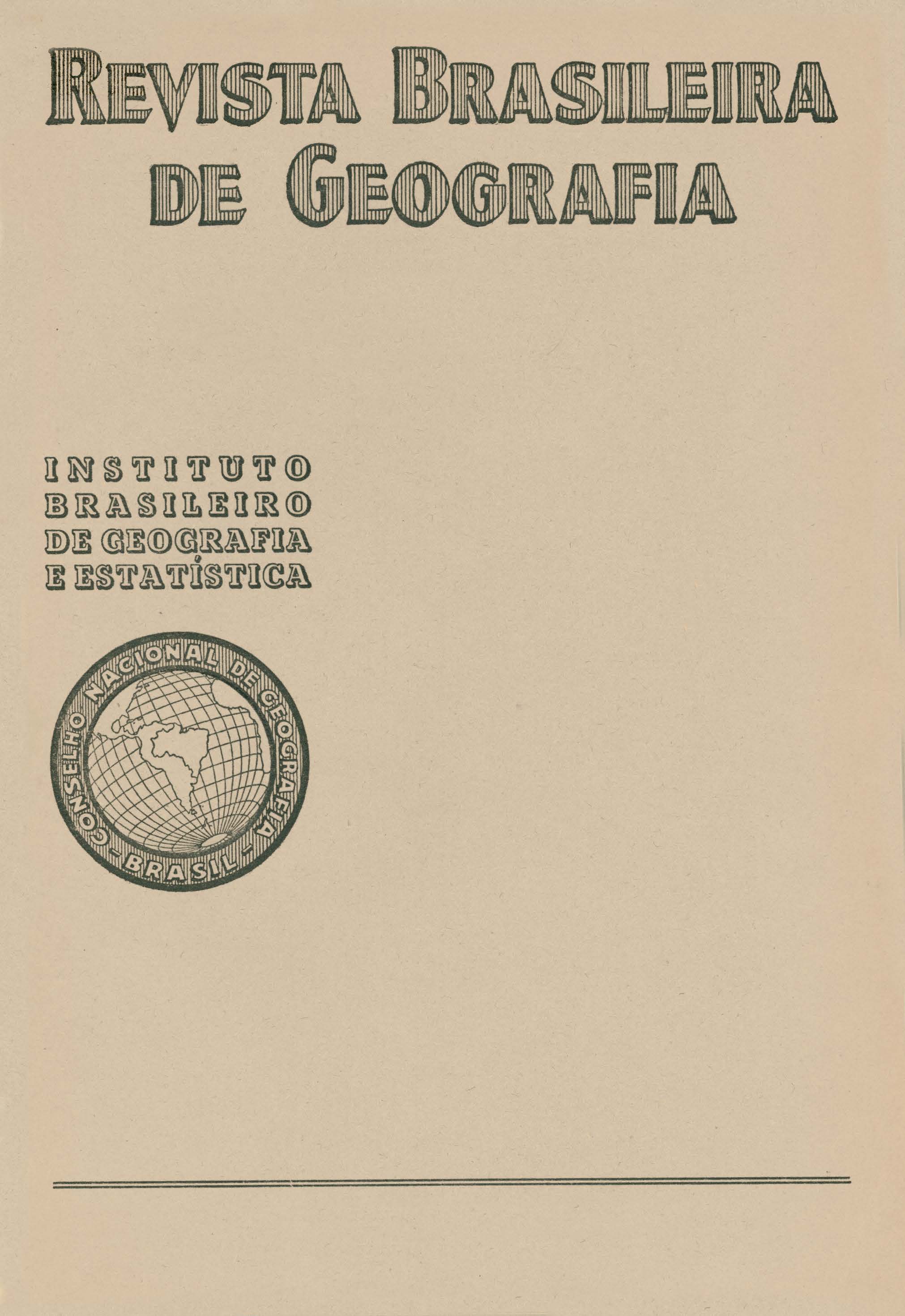Reconhecimento geomórfico nos planaltos divisores das bacias Amazônica e do Prata entre os meridianos 51º e 56º WG
Resumo
This article concerns the geomorphological configurations of the parts of Mato Grosso and Goiás located between the meridians 51°W and 56°W, on the divide between the Amazon and Prata basins. The author points out that information on this area is still scarce and is found in the old works of some authors, which he cites.
The present article covers the observations that were made in 1946 in the high plains of the Araguaia and the São Lourenço, and the studies the author made in 1947 as a member of an expedition to central Brazil, promoted by the Geological and Mineralogical Division of the Ministry of Agriculture. The region is sparsely populated and the cities contain only a small number of inhabitants, the rural, population being insignificant, and production being insufficient to supply the local demands. Important centers of diamond prospecting are to be found; such as those at Ivasé, Poxoréu, Guiratinga, and Aragarças.
The geology is described in its general aspect as being made up of mesozoic and Paleozoic formations, having a thickness of about one thousand meters and lying on a base consisting of an ancient peneplane. The mesozoic layers were subject to basaltic intrusions, to which fact is due the preservation of the high plain of the Paraná River. The layers are described at the various areas in which they outcrop, the simplicity of the upper sedimentary layers being noteworthy, while the precambrian series are seen to be more disturbed. Analyzing the factors pertaining to the relief features, the author shows that the principal factor in their shaping is the water courses, which produce a very intensive degrading action and remove from the area the products of this reduction. The following geomorphological divisions are established: 1) the basalt high plain of the Paraná River, 2) the high plain of the Roncador and das Mortes River 3) the peneplane of the Araguaia, and 4) the Cuiabana peneplane. There follows a detailed description of each one of these formations. A prominent is that the high plain of the Paraná River has a rather simple structure, the terminal margin of the high plain being made up of a cuesta, with mesas having 1,000 meter elevations in Goiás and only 750 meters in Mato Grosso.
The high plains of the large divide, with elevations of from 100 to 1.000 meters, are situated between the basaltic high plains, the Araguaia peneplane, and the high plain of the das Mortes River bordered by the highlands of the crystalline high plain of Goiânia, and to the west limited by a line of cuestas which goes from the headwaters of São Lourenço to the Aquidauana ranges. The high plain o f the das Mortes River, with a range in altitude of from 700 to 800 meters, has a very uniform relief and is made up of from 200 to 300 meters of almost horizontal devonian sandstones, which show a few local deformations. The high plain of the Roncador, with from 600 to 700 meter elevation, is the remnant of a dissected high plain, with dendritic drainage on a thin covering of sedimentary material, probably cretaceous, deposited over the metamorphic rocks of the Cuiabá series and the complex crystalline formation. The peneplane of the Araguaia is a rejuvenated old erosion surface, with an average elevation of 150 meters, upon which the valleys of the Piranha, Macacos, Caiapozinho, and other rivers are to be found. It is a surface of Precambrian rocks. principally schists, granites, and gneisses, originated by the erosion cycle which has been going on since the tertiary period. The Cuiabana plain, with an elevation of 250 meters, has an old erosion surface established in metamorphic rock, and, rising imperceptibly in the neighborhood of the folds of the Chapada and the São Vicente Highlands, presents a similar geographic appearance as the Araguaia plain.
After making a paleogeographic summary describing the geomorphological evolution in geologic time, the author goes on to interpret the course of the actual drainage systems and shows that the basaltic margin. by being the most resistant element structurally, took the position of being the divide between the great basins.






